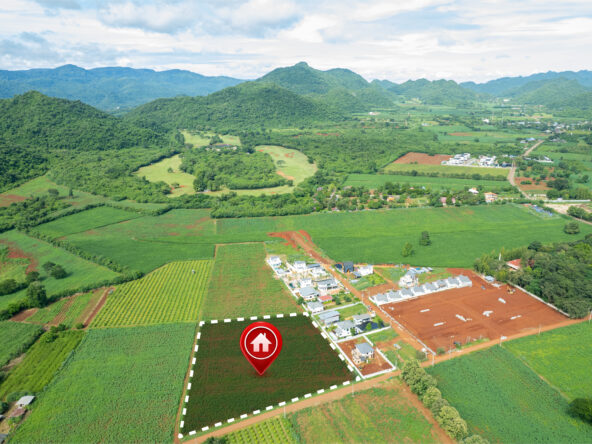Hey there, land investors! Ready to dive into the world of responsible and sustainable development? We’ve got your back! In this blog post, we’re spilling the beans on Environmental Impact Assessments (EIAs) and why they’re your secret weapon for eco-friendly land investments. Let’s make sure your project not only rakes in the green but keeps the world green too!
I. Understanding Environmental Impact Assessments (EIAs):
Okay, let’s get cozy and chat about the magic behind Environmental Impact Assessments (EIAs). Think of them as your project’s eco-crystal ball – giving you a sneak peek into the future, but instead of predicting lottery numbers, it foretells the environmental impact of your endeavors.
A. Definition and Purpose of EIAs:
Alright, first things first. What’s the scoop on EIAs? These assessments are like the wise old guardians of the environment, ensuring that your project doesn’t unknowingly wreak havoc on the world around it. They’re not here to rain on your parade; they’re here to make sure your parade is as eco-friendly as possible.
Why do we need them, you ask? Well, imagine you’re building the next big thing – a shiny new project. EIAs step in to guide you through the potential pitfalls and help you make decisions that not only boost your bottom line but also protect the environment. It’s a win-win situation.
B. Key Components of EIAs:
- Identification of Potential Environmental Impacts:
- Picture this: You’re about to build something awesome. EIAs prompt you to take a step back and think about how your awesomeness might affect the environment. From local wildlife to air and water quality, it’s like having a checklist for everything eco-related.
- Assessment of the Significance of Identified Impacts:
- Not all impacts are created equal. Some are big, some not so much. EIAs help you figure out which ones are the environmental heavyweights, so you can focus your efforts on the important stuff.
- Mitigation Measures to Address Adverse Effects:
- It’s superhero time! EIAs guide you in coming up with strategies to deal with potential environmental hiccups. Think of it as creating a shield against adverse effects – ensuring your project does more good than harm.
- Monitoring and Reporting Requirements:
- Once your project is up and running, EIAs don’t abandon you. They stick around to make sure you’re keeping up with your eco-promises. Regular check-ins and reports ensure that your project remains a beacon of sustainability.
Now, let’s break it down. EIAs are not just a bunch of paperwork; they’re the superhero cape your project needs to fly high in the world of responsible development. They’re your secret sauce for making environmentally conscious decisions throughout the project’s life cycle. So, gear up – it’s time to make your project a green success story!
II. Navigating the Regulatory Landscape: Your Roadmap to Green Approval
Alright, buckle up, eco-enthusiasts! We’re diving into the regulatory side of the environmental pool. Don’t worry; we’re here to guide you through the twists and turns, so your project sails smoothly through the bureaucratic waters.
A. Overview of Environmental Regulations Governing Land Investment:
Let’s kick things off with a bit of a reality check. Every project, big or small, has to play by the rules. And in the environmental realm, those rules are often laid out in black and white (or green, considering the topic). Get to know the lay of the land – from local ordinances to national and even international regulations. It’s like reading the manual before assembling your new gadget; you don’t want to miss a step.
Remember, regulations are like the guardrails on a highway – they’re there to keep everyone on the right path and prevent chaos. So, whether it’s air quality standards, biodiversity protection, or water resource management, understanding the rules is the first step to gaining environmental approval.
B. Key Agencies and Authorities Involved in EIAs:
Now, let’s talk about your partners in green crime – the agencies and authorities overseeing the Environmental Impact Assessment (EIA) rodeo. These folks are your co-pilots on this eco-adventure.
Local environmental agencies know the lay of the land like no one else. They’re the ones who’ll give your project the green light (pun intended) or send you back to the drawing board. National bodies might step in for the big-picture stuff, ensuring your project aligns with broader environmental goals. Oh, and don’t forget about the international players – especially if your project has cross-border implications.
Working hand in hand with these agencies is key. They hold the keys to approval and can provide valuable insights throughout the EIA process. Think of them as the seasoned tour guides on your green journey.
C. Compliance Requirements for Investors:
Now, let’s get down to brass tacks – your responsibilities as an eco-warrior investor. Compliance isn’t just a buzzword; it’s your ticket to the sustainability party. From the get-go, know what’s expected of you.
Are there specific permits you need? Check. Reporting obligations? You bet. It’s not about jumping through hoops; it’s about showing the world that you’re serious about being a responsible custodian of the environment. Compliance isn’t a burden; it’s a badge of honor, showcasing your commitment to playing by the green rules.
Understanding the regulatory landscape is like having a treasure map for eco-success. Navigating these waters might seem daunting, but with the right knowledge and a commitment to compliance, you’re not just an investor – you’re a green trailblazer. So, gear up, eco-explorer; the regulatory adventure awaits!
III. Embarking on the EIA Journey: Navigating the Steps to Eco-Success
Ready to strap on your environmental boots and dive into the nitty-gritty of the Environmental Impact Assessment (EIA) process? We’re about to unveil the steps that will transform your project from just another venture into a sustainability superhero. Let’s get rolling!
A. Preparing for an EIA:
- Gathering Baseline Environmental Data:
- Imagine you’re starting a new recipe. Before you mix the ingredients, you need to know what’s in the pantry, right? Same goes for your project. Collect data on the current state of the environment – air quality, biodiversity, water resources – you name it. It’s the baseline, the starting point for your eco-adventure.
- Identifying Stakeholders and Engaging with the Community:
- Every project has its supporting cast. Identify your stakeholders – the local community, environmental groups, and anyone who might be affected by your project. Engage with them early and often. It’s like hosting a pre-project brainstorming session, where everyone’s ideas are on the table. The community is not just an audience; they’re your co-authors in the story of your project.
B. Conducting the Environmental Impact Assessment:
- Scoping and Defining Project Boundaries:
- Picture your project as the star of a movie. Define its role – where it starts, where it ends, and what it includes. This step, known as scoping, sets the stage for a focused assessment. It’s like finding the perfect spotlight for your project on the environmental stage.
- Impact Identification and Assessment Methodologies:
- Time to put on your detective hat. Identify potential impacts of your project – the good, the bad, and the environmentally significant. What does it mean for the local flora and fauna? How about the air and water? Choose assessment methodologies that fit like a glove, ensuring a thorough investigation. It’s your project’s CSI moment – without the crime, but with a lot of environmental clues.
- Public Consultations and Involvement:
- Open the doors, let the community in! Public consultations are like throwing a big party where everyone’s invited. Listen to concerns, gather feedback, and incorporate it into your project plan. It’s not just about transparency; it’s about building a project that reflects the values and needs of the community.
C. Developing Mitigation Strategies:
- Strategies for Minimizing Environmental Impact:
- Time to be the superhero your project needs. Develop strategies to minimize or eliminate the adverse environmental impacts you’ve identified. It’s not about avoiding challenges; it’s about facing them head-on with green solutions. Think of it as your project’s very own eco-toolkit.
- Incorporating Sustainable Practices in Project Design:
- Sustainability isn’t just a buzzword; it’s your project’s secret sauce. Infuse eco-friendly practices into your project design. From energy-efficient technologies to resource-conscious materials – it’s the blueprint for a project that’s not just successful but environmentally responsible.
D. Reporting and Documentation:
- Compiling the EIA Report:
- Time to tell the story of your project’s environmental journey. Compile all your findings, strategies, and community inputs into a comprehensive EIA report. It’s not just paperwork; it’s your project’s autobiography – from conception to eco-glory.
- Submitting the Report to Regulatory Authorities:
- Ready for the grand premiere? Submit your EIA report to the regulatory authorities. It’s the moment of truth where your project gets the green stamp of approval. Compliance isn’t just a formality; it’s your project’s ticket to the world of responsible development.
The EIA process is like orchestrating a symphony of environmental considerations. Each step is a note, and when played in harmony, they create a masterpiece of sustainability. So, fellow eco-conductors, grab your batons; it’s time to lead your project to an eco-spectacle!
IV. Navigating Environmental Impact Assessment Challenges: A Guide to Overcoming Hurdles
Let’s dive into the thick of it, exploring the common challenges and unveiling strategies to overcome them. It’s time to turn roadblocks into stepping stones on your path to eco-success!
A. Identifying and Addressing Potential Hurdles in the EIA Process:
- Data Limitations:
- Challenge: Ever feel like you’re missing pieces of the puzzle? In the world of EIAs, data limitations can be a stumbling block. Incomplete or unavailable data can hinder your ability to assess environmental impacts accurately.
- Solution: Get creative! Employ alternative data sources, use modeling techniques, and engage with local communities to gather on-the-ground insights. It’s like solving a jigsaw puzzle; sometimes you need to think outside the box to complete the picture.
- Conflicting Stakeholder Interests:
- Challenge: Picture this – different stakeholders with different priorities, sometimes pulling in opposite directions. Conflicting interests can create tension and slow down the decision-making process.
- Solution: It’s a balancing act! Act as the mediator, fostering open communication among stakeholders. Find common ground and address concerns collaboratively. Remember, everyone’s input is valuable in creating a project that benefits both investors and the community.
- Regulatory Complexities:
- Challenge: Navigating the regulatory maze can feel like a daunting task. The plethora of rules and regulations can be overwhelming, leading to delays and compliance issues.
- Solution: Be a regulatory ninja! Develop a clear understanding of the regulatory landscape from the get-go. Seek expert advice, build strong relationships with regulatory authorities, and stay updated on any changes. Knowledge is power, and in this case, it’s your secret weapon.
B. Strategies for Overcoming Community Resistance and Obtaining Social License:
- Community Resistance:
- Challenge: The community isn’t always on board from day one. Resistance can stem from concerns about environmental impacts, perceived risks, or even a lack of understanding.
- Solution: Communication is key! Engage in transparent and ongoing dialogue with the community. Address concerns proactively, provide clear information, and involve them in the decision-making process. When the community feels heard and valued, resistance can transform into collaboration.
- Obtaining Social License:
- Challenge: Social license isn’t a physical document; it’s the community’s acceptance and support for your project. Without it, your project might face opposition.
- Solution: Build relationships, not just projects. Invest time in community engagement, participate in local initiatives, and showcase the positive impacts your project can bring. Social license isn’t given; it’s earned through trust, transparency, and a genuine commitment to the community’s well-being.
C. Case Studies Illustrating Successful EIA Navigation in Land Investments:
- Learning from Success Stories:
- Challenge: The unknown can be intimidating. Understanding how to navigate the EIA process successfully can be challenging without real-world examples.
- Solution: Enter the world of case studies! Explore success stories from similar projects. Understand the strategies employed, challenges faced, and how they triumphed. It’s like having a mentor – learn from others’ experiences to pave your own path to success.
- Applying Lessons from Past Projects:
- Challenge: Every project is unique, and what worked for one might not work for another. Adapting lessons learned from case studies to your specific situation can be tricky.
- Solution: Be flexible! Take inspiration from successful projects, but tailor strategies to fit the specific context of your venture. It’s about applying principles, not copying formulas. Learn from the past, but always be ready to innovate for future success.
Facing challenges is part of the EIA adventure, but with the right mindset and strategies, you can overcome anything that comes your way. Consider challenges not as roadblocks but as opportunities to showcase your environmental resilience and commitment to sustainable development. Onward, eco-warriors!
V. Benefits of EIA Compliance for Investors:
A. Enhancing Project Sustainability and Reputation:
- Show off how going green isn’t just good for the planet – it’s a golden ticket for your project’s reputation.
- High-fives all around for sustainability!
B. Reducing Legal and Financial Risks:
- Nobody wants to play the legal jeopardy game. Learn how EIA compliance keeps you out of the courtroom drama.
- Save money, sleep better – win-win.
C. Accessing Funding and Support from Environmentally Conscious Investors:
- Dive into the world of eco-conscious investors. Show them your green credentials and watch the funding flood in.
- It’s like crowdfunding, but for the environment!
VI. Conclusion:
A. Recap of Key Points in Navigating EIAs for Land Investment:
- Quick summary of the eco-odyssey we just embarked on. You’re practically an EIA pro now!
- Remember, it’s not just about making money; it’s about making a positive impact.
B. Emphasizing the Importance of Responsible and Sustainable Practices:
- Sign off with a friendly reminder that responsible practices aren’t just trendy – they’re the way forward.
- Cheers to green projects and even greener futures!
C. Encouraging Investors to Prioritize EIAs for Long-term Success and Positive Environmental Impact:
- A final nudge to all investors out there. Make EIA your BFF in the investment game.
- Let’s build a world where green and gold go hand in hand!




